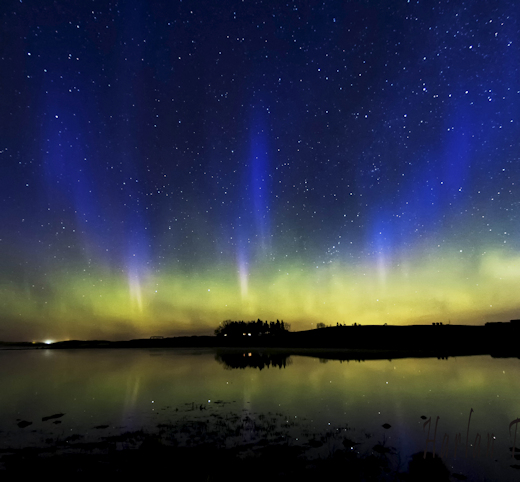At https://eurekalert.org/pub_releases/2019-05/run-tis050619.php …. the first image of a black hole has led to the next challenge – how to take sharper images in order to further test Einstein's Theory of General Relativity. ESA astronomers are putting together plans to launch radio telescopes in space (see Astronomy and Astrophysics May 2019). The idea is to place satellites into orbit in order to observe what is thought to be black holes. Sharper images of a black hole will provide better information in order to test Relativity (or that is the thinking).
Meanwhile, at http://spaceweather.com (May 11th 2019) we have a blue aurora over Canada …
 … aurorae are usually green and sometimes red. These are the colours created when oxygen is lit by electrons swinging in from space. The deep blue colour is rare. It is due to a nitrogen. Energised particles striking ionised molecular nitrogen.
… aurorae are usually green and sometimes red. These are the colours created when oxygen is lit by electrons swinging in from space. The deep blue colour is rare. It is due to a nitrogen. Energised particles striking ionised molecular nitrogen.
At https://phys.org/news/2019-05-evolution-magnetic-field-star-forming-comp… … in a paper published at the arXiv preprint site we have an insight into the signs of magnetic fields in space. It is being suggested that magnetic fields play an important role in the star forming process.
While at https://phys.org/news/2019-05-clues-ancient-galaxies-lit-universe.html … new clues on how ancient galaxies lit up the universe. Some of the earliest galaxies to form, it is thought, were brighter than expected. This is because, or say they say, these galaxies were releasing high amounts of ionised radiation. One of the latest theories revolves around an Epoch of Reionisation – changing from a universe of neutral hydrogen into one filled with ionised hydrogen.
